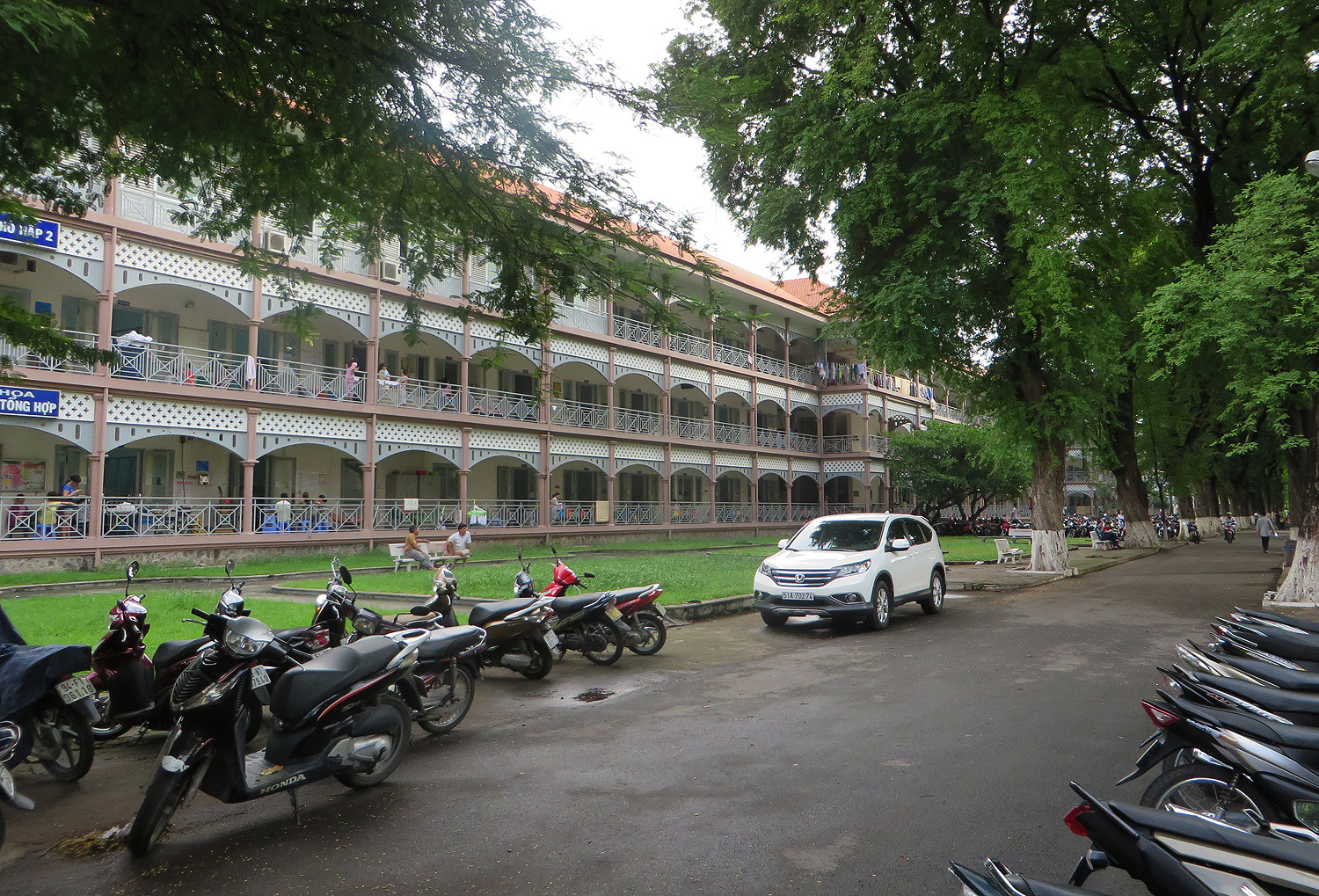
The Children’s Hospital 2
This article was published previously in Saigoneer http://saigoneer.com
One of the oldest hospitals in Asia, the Children’s Hospital 2 (Bệnh viện Nhi đồng 2) at 14 Lý Tự Trọng began life as a French military hospital.
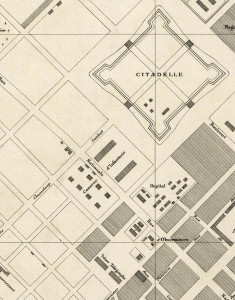
The original location of the hospital is marked clearly on this 1864 map
Founded in 1862 by Admiral-Governor Louis-Adolphe Bonard (1805-1867), the Hôpital Militaire was originally located at the southeast corner of the rue Nationale [Hai Bà Trưng] and boulevard Norodom [Lê Duẩn] intersection, where the Kumho Asiana Plaza now stands.
Its primary function was to serve the marine infantry, who were then garrisoned in makeshift accommodation on the northern side of the same junction. However, from the outset it treated colonial civil servants as well as French and Vietnamese soldiers.
The hospital was staffed by French military doctors, with nursing support provided by the Sisters of Saint-Paul de Chartres.
Published in 1900, Les missions catholiques françaises au XIXe siècle, a history of the French Catholic foreign missions in the 19th century, describes the facilities of this early Military Hospital:
“Naturally, the first Military Hospital was nothing like the magnificent property that exists today: there were just three small rooms for the sick, a cramped room for the Sisters, and another tiny room of the same size for the administrator and doctors – that was all! The furniture was no better; biscuit boxes served as chairs, empty bottles as chandeliers. But the good Sisters hardly thought of comfort; their main concern was looking after the sick.”
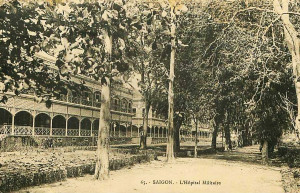
The Military Hospital in the early 20th century
In the late 1870s, the hospital was rebuilt at its current location, 14, rue Lagrandière [14 Lý Tự Trọng], to plans by Lieutenant-Colonel J Varaigne, Director of the Marine Infantry Engineering Corps, and his deputy, Captain A A Dupommier.
Their design for the Colonial Infantry Barracks (1870-1873) had already attracted considerable acclaim, and it was therefore decided that the hospital buildings should be built in identical style.
The hospital buildings comprised a series of large pavilions, built from cast iron and brick on raised granite platforms. Linked to each other by gangways, they overlooked a central tree-lined avenue and incorporated peripheric verandas to enhance ventilation and optimise sanitary conditions. All of the construction materials were transported from France.
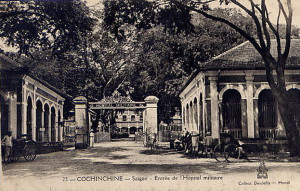
The main entrance to the Military Hospital in the early 20th century
In his memoirs of 1905, former Indochina Governor-General Paul Doumer (1897-1902) described the Military Hospital and the Colonial Infantry Barracks as “models of their kind…. The Hospital in particular, with its huge buildings and gardens lined with trees, plants and flowers, gives an impression of serene beauty that should make pain more bearable, and death sweeter for those who will die – too many, alas!”
It was in one of the hospital’s smaller pavilions that Albert Calmette (1863-1933), tasked with developing vaccines against rabies and smallpox, founded the first Pasteur-Institut outside France in 1891.
In 1904, when Alexandre Yersin (1863-1943) set up a larger Pasteur-Institut in Nha Trang, the Pasteur-Institut in Saigon became its annex. It was relocated to its current address, 167 rue Pellerin [Pasteur], in 1905.
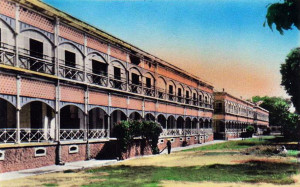
The Grall Hospital in 1951
In 1925, the Hôpital Militaire was transformed into a general hospital and renamed the Hôpital Grall (Grall Hospital), in honour of the former Cochinchina Inspector-General of Medicine, Dr Charles Grall.
During the late colonial period, the hospital’s facilities continued to expand, and by the early 1950s, the Grall offered in excess of 500 beds and was recognised as a flagship of French medicine in Southeast Asia.
After the withdrawal of the last French troops from Indochina in April 1956, an agreement was signed between the French and RVN Foreign Ministries, permitting the French to continue running the hospital. During the 1960s, the hospital’s French medical staff ran training programmes at several universities and teaching hospitals, set up leprosy and polio treatment centres, and conducted several important research projects on Southeast Asian pathology.
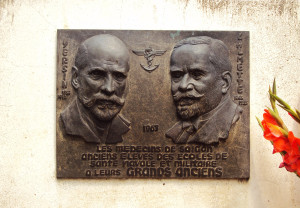
The stele honouring the memory of scientists Calmette and Yersin
In 1963, a stele was set up in the hospital grounds, honouring the memory of scientists Calmette and Yersin, founders of the Pasteur-Institut in Việt Nam, which began life at the Military Hospital.
Following Reunification, the Grall Hospital resumed operation as a general hospital, but on 19 May 1978, it was transformed into a specialist pediatric hospital.
In May 1990, the Association des Anciens et des Amis de l’Hôpital Grall (Alumni and Friends Association of the Grall Hospital) was set up. Five months later, a Memorandum of Understanding was signed between France and Việt Nam, providing for “the Rehabilitation of Children’s Hospital No. 2 in Hồ Chí Minh City, known as the Grall Hospital,” including the upgrading of buildings and the improvement of medical and surgical equipment.
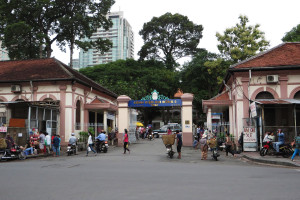
The main entrance to the Children’s Hospital 2 today
Carried out in stages between 1991 and 1995, this major project restored the old hospital pavilions sympathetically, adding an additional floor to what had previously been two-storey buildings, yet retaining all of the original architectural features.
Set amidst lush gardens and shady trees, the Children’s Hospital 2 has been cited as a prime example of how good architecture can make a healthcare environment welcoming to patients and their families, rather than treating them as victims in a stark and sterile space.
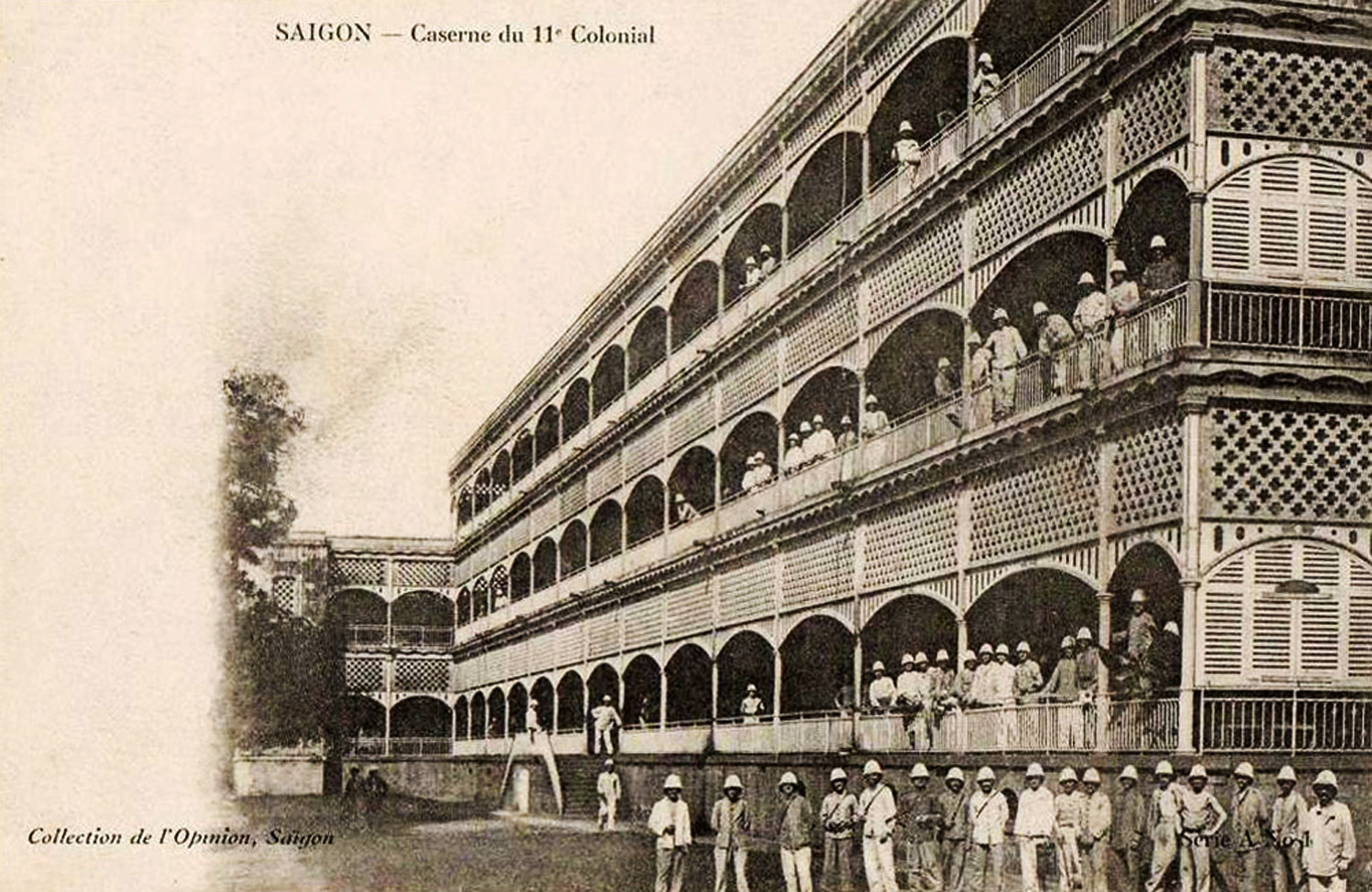
The design of the 11th Colonial Infantry Barracks buildings became the model for those in the Military Hospital
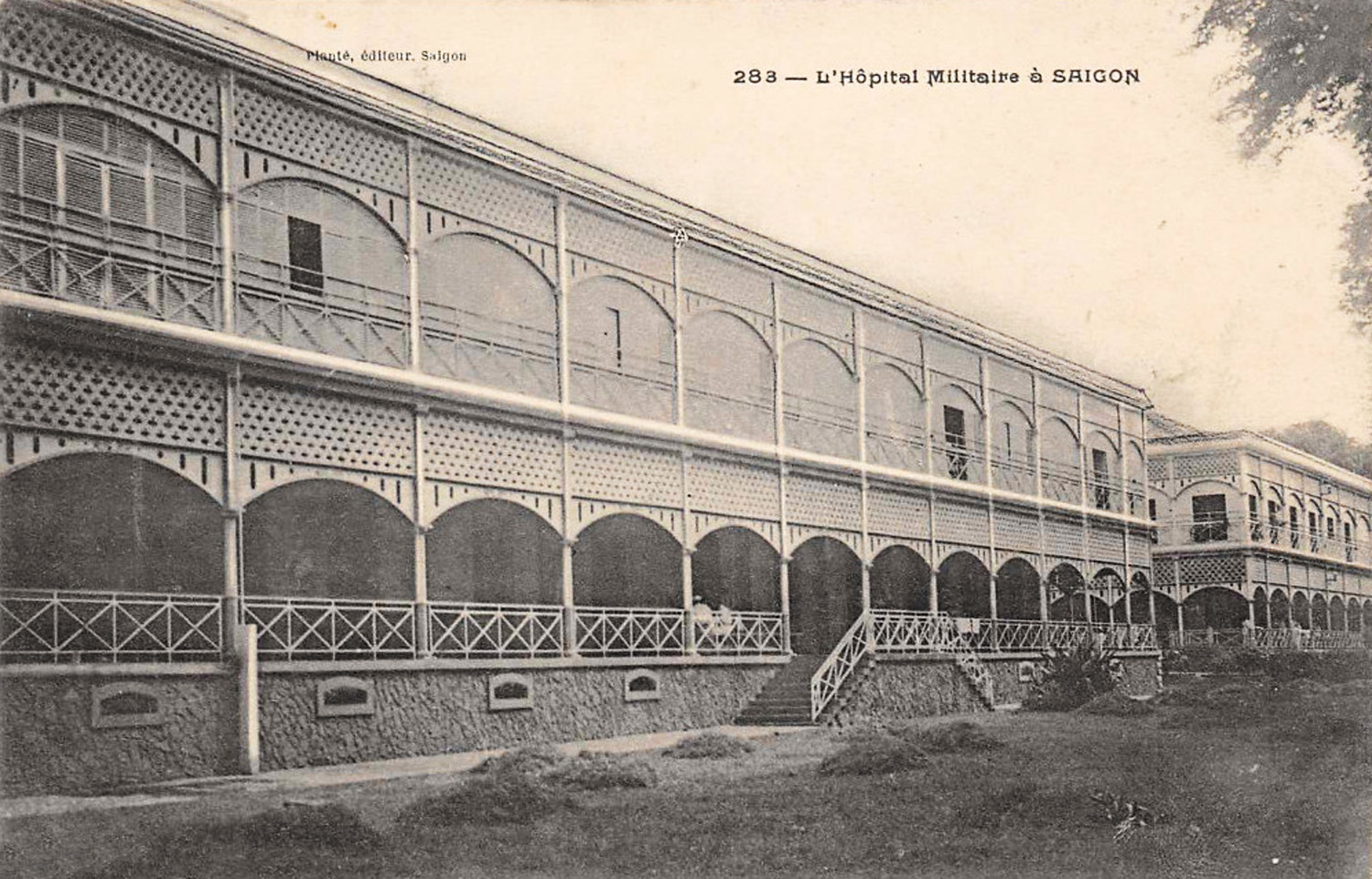
The Military Hospital in the late 19th century
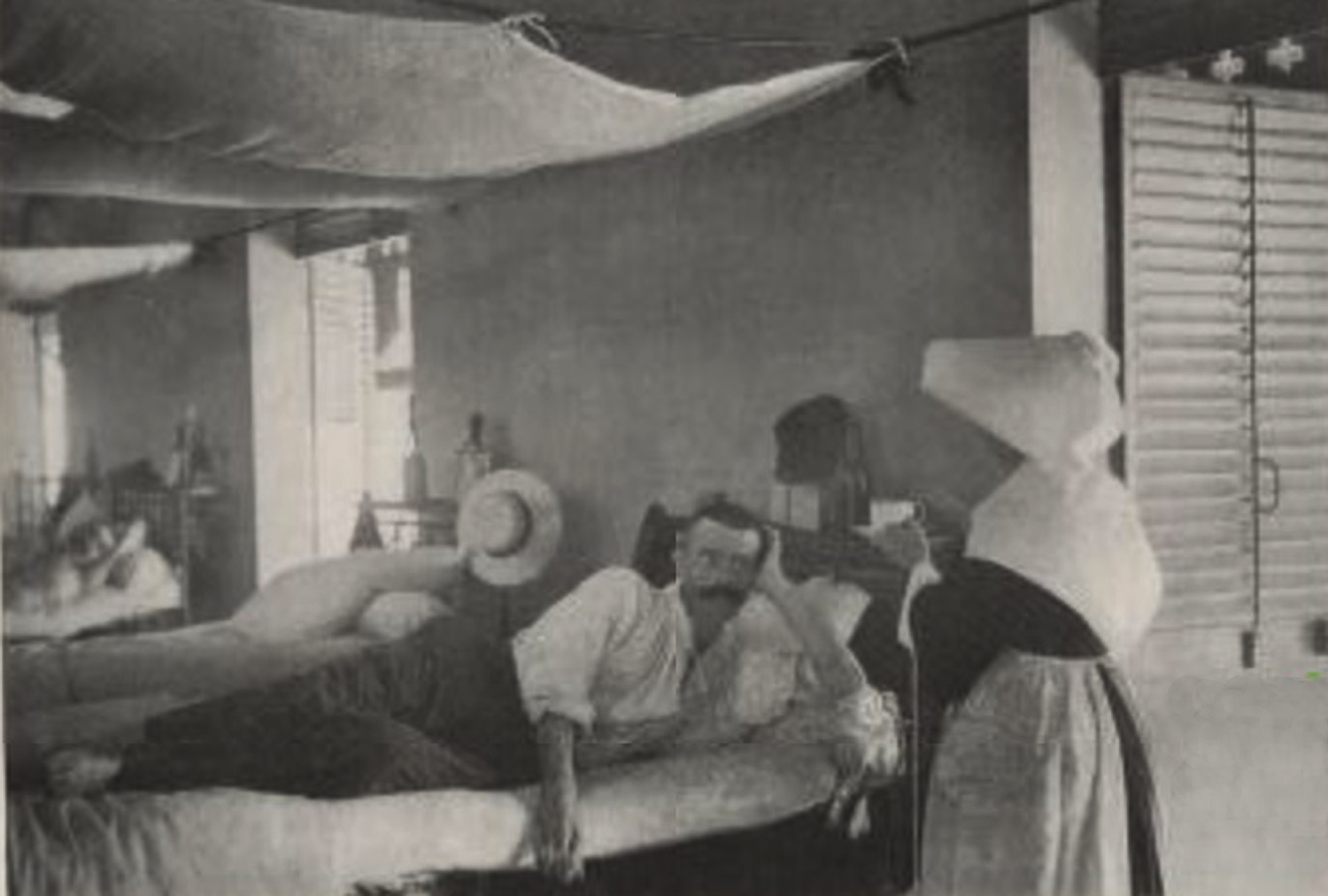
A patient being cared for by one of the Sisters of Saint-Paul de Chartres in the Military Hospital in the early 20th century
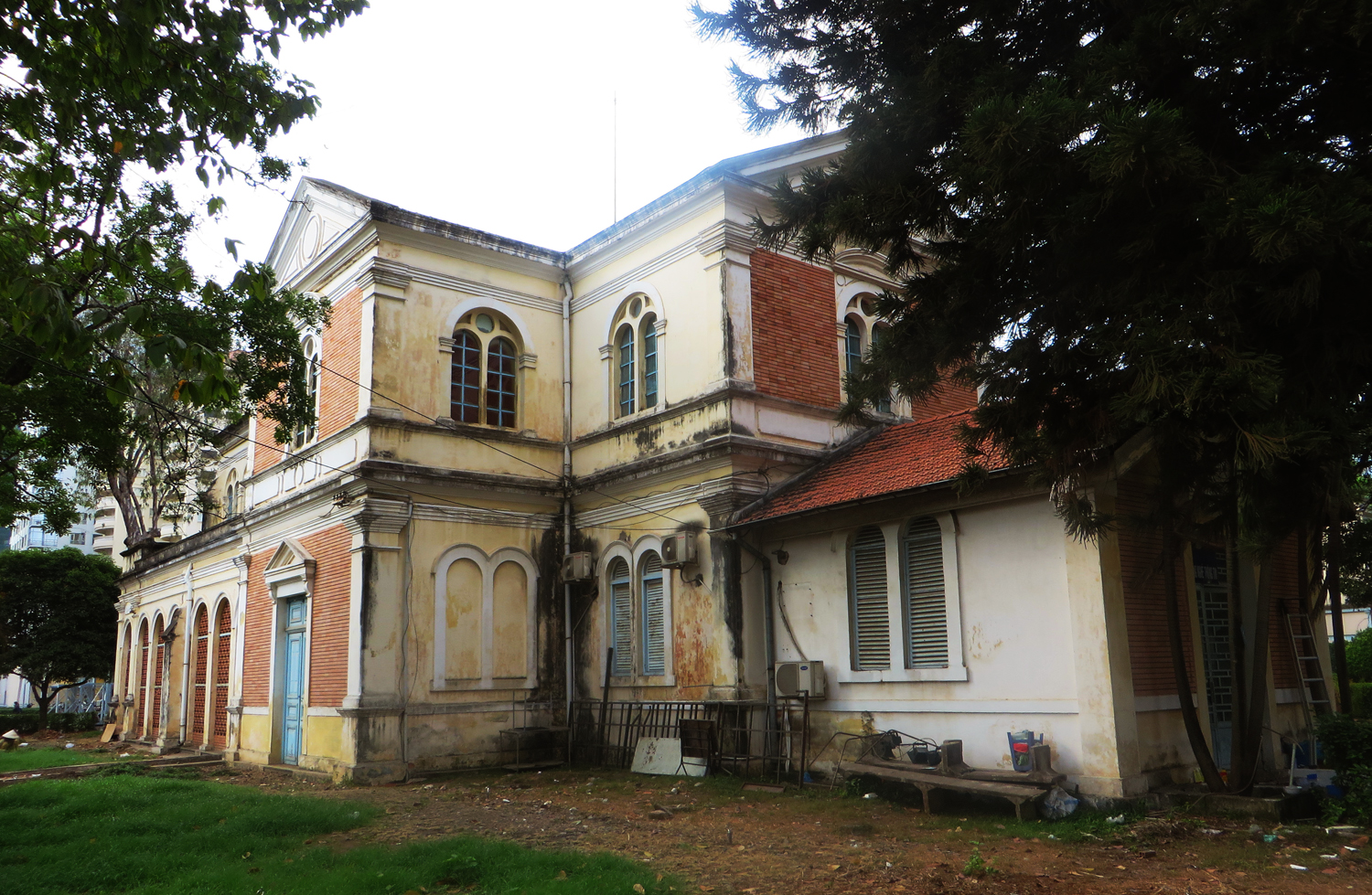
The hospital chapel, now used as a store
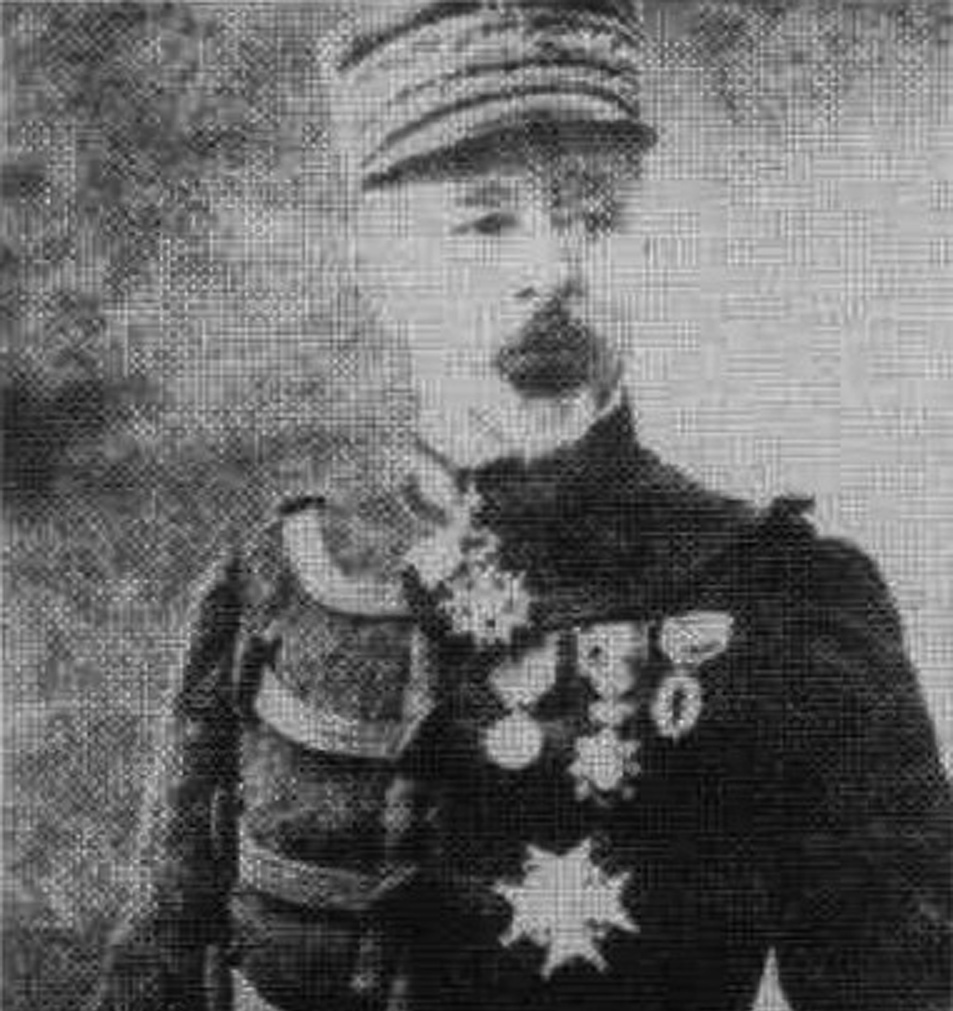
In 1925, the Hôpital Militaire was renamed the Hôpital Grall, after former Inspector-General of Medicine, Dr Charles Grall
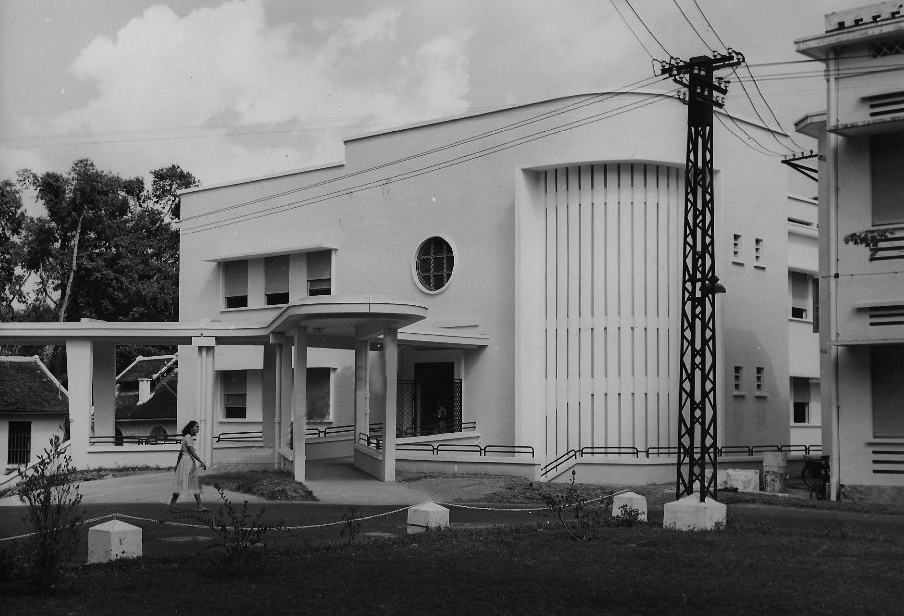
An art deco hospital building, added in the early 1930s
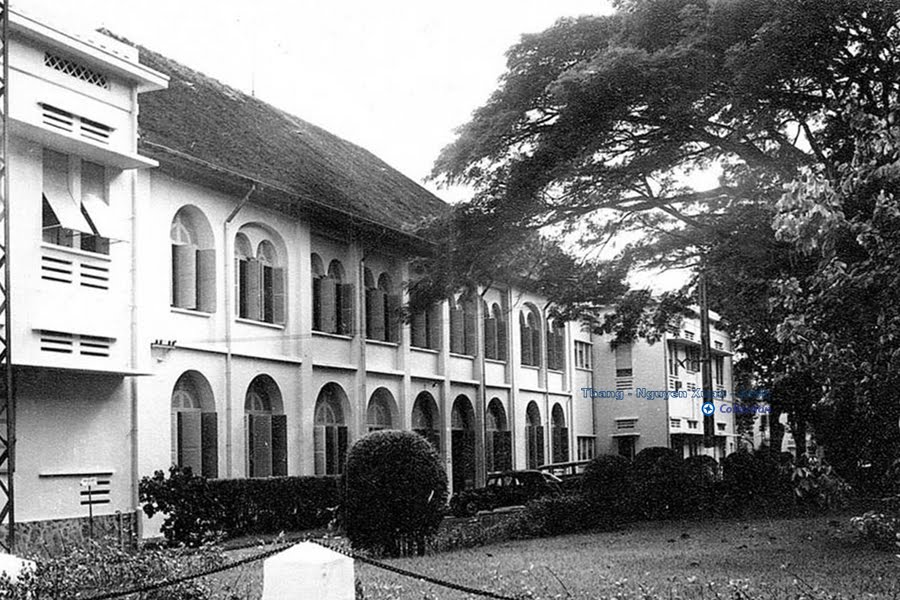
Part of the Grall Hospital in the 1940s
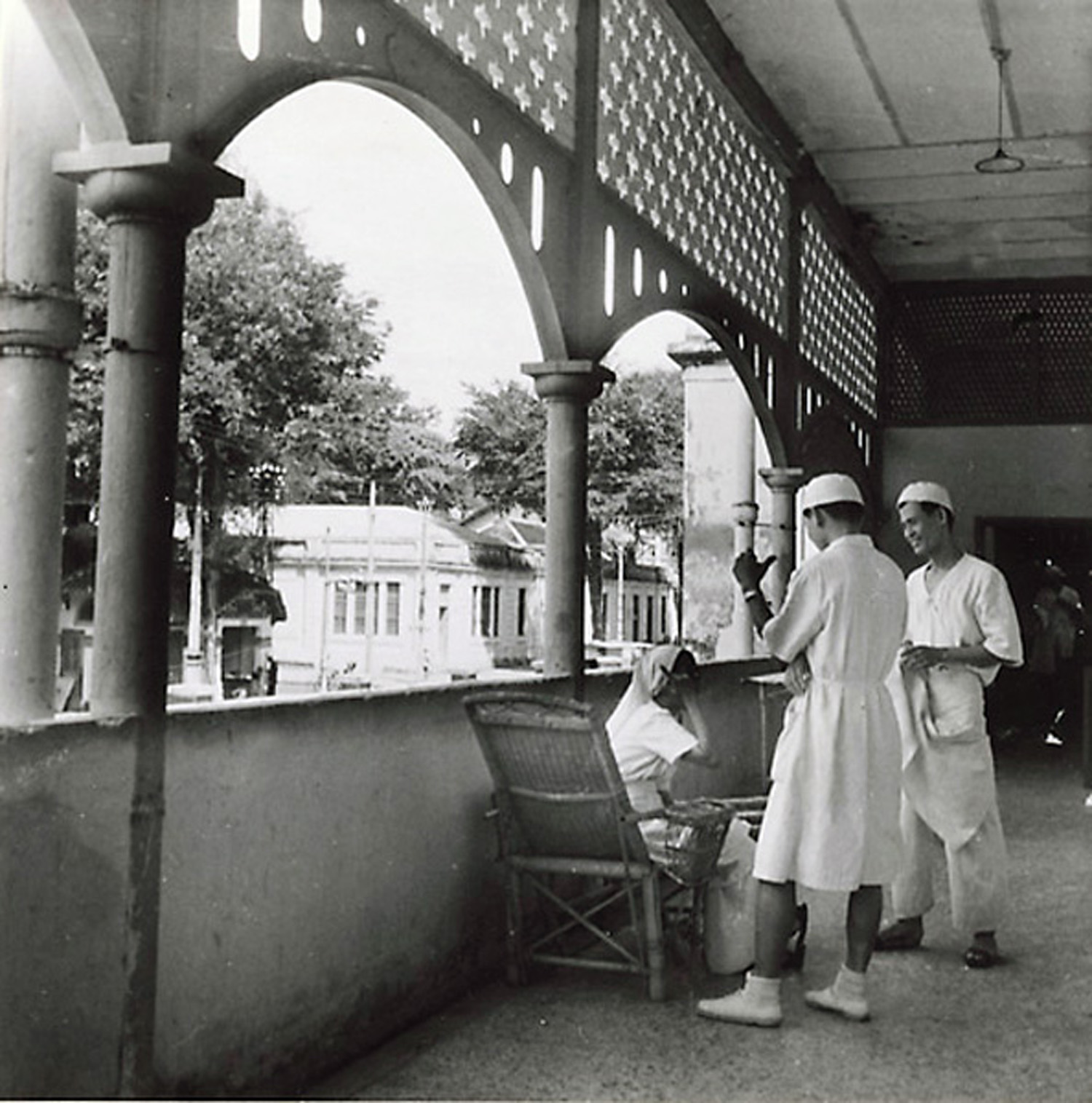
Nurses attend to a patient in 1947
Tim Doling is the author of the guidebook Exploring Saigon-Chợ Lớn – Vanishing heritage of Hồ Chí Minh City (Nhà Xuất Bản Thế Giới, Hà Nội, 2019)
A full index of all Tim’s blog articles since November 2013 is now available here.
Join the Facebook group pages Saigon-Chợ Lớn Then & Now to see historic photographs juxtaposed with new ones taken in the same locations, and Đài Quan sát Di sản Sài Gòn – Saigon Heritage Observatory for up-to-date information on conservation issues in Saigon and Chợ Lớn.

